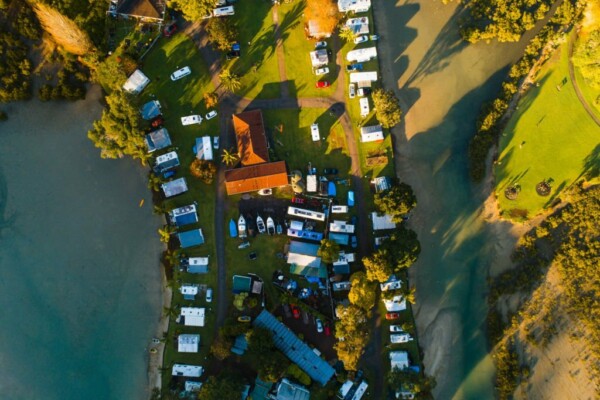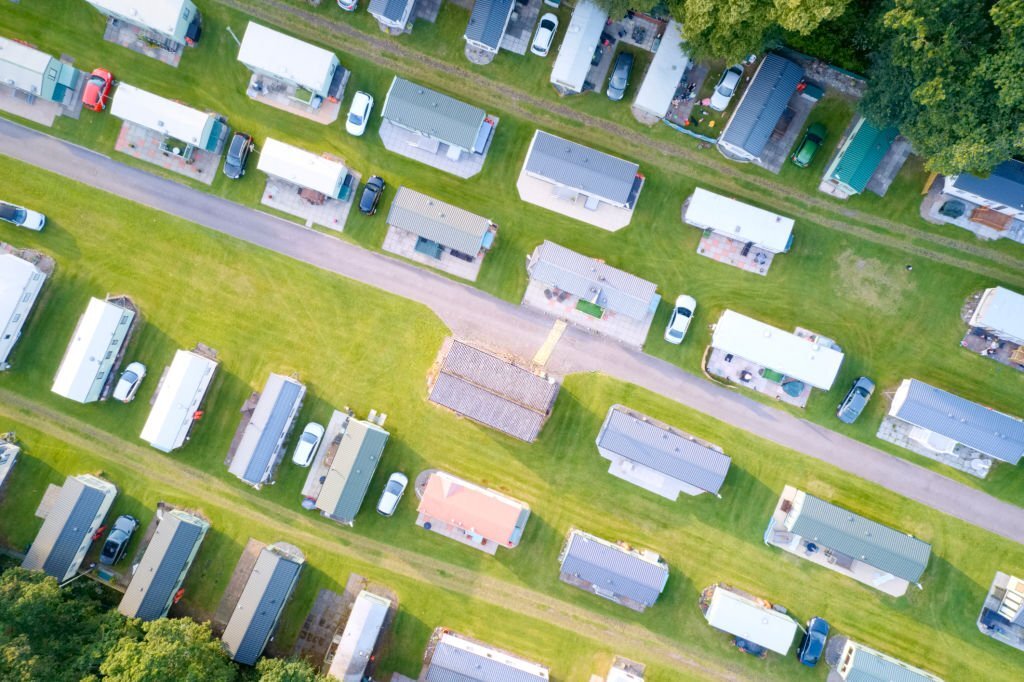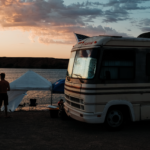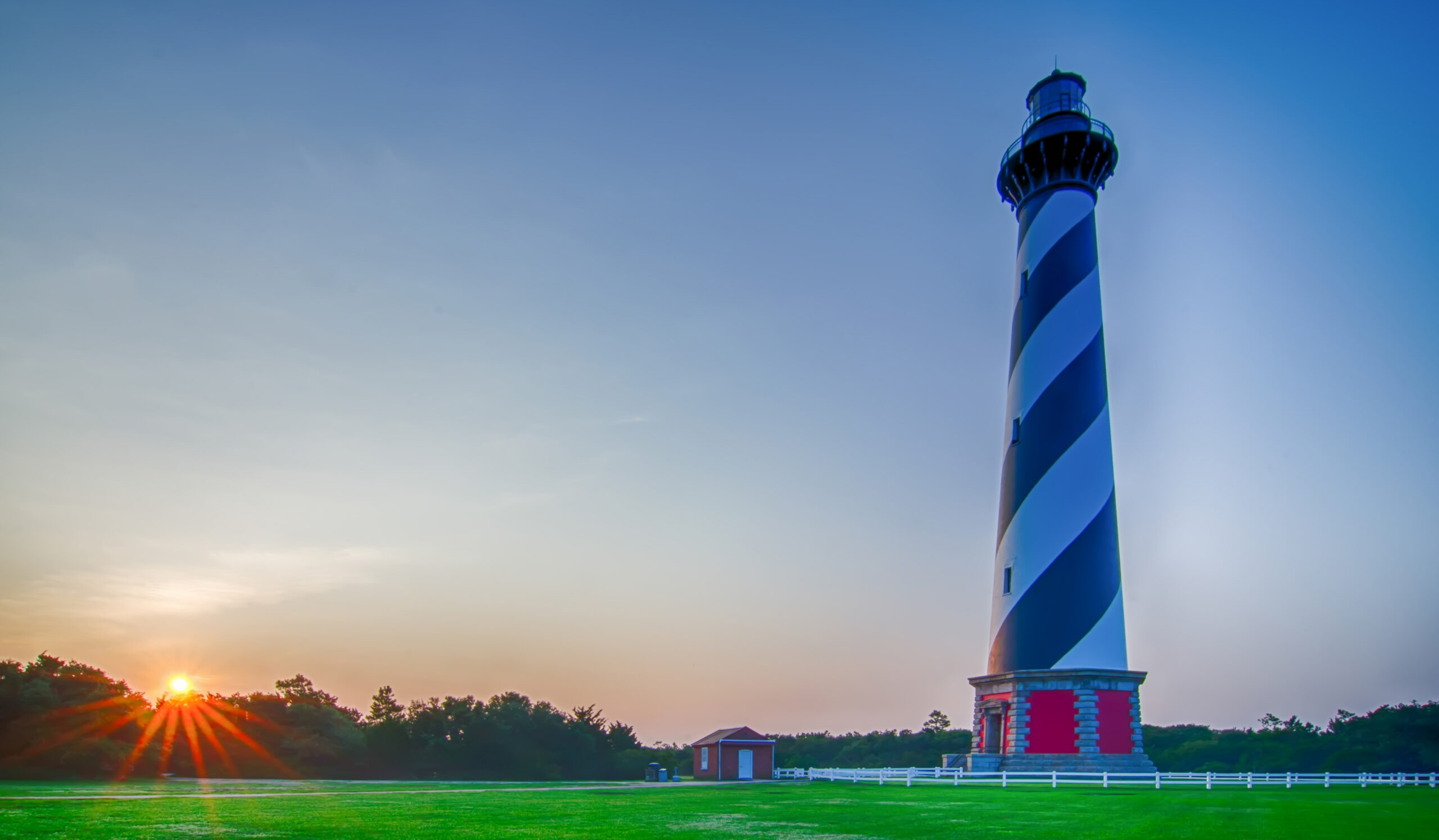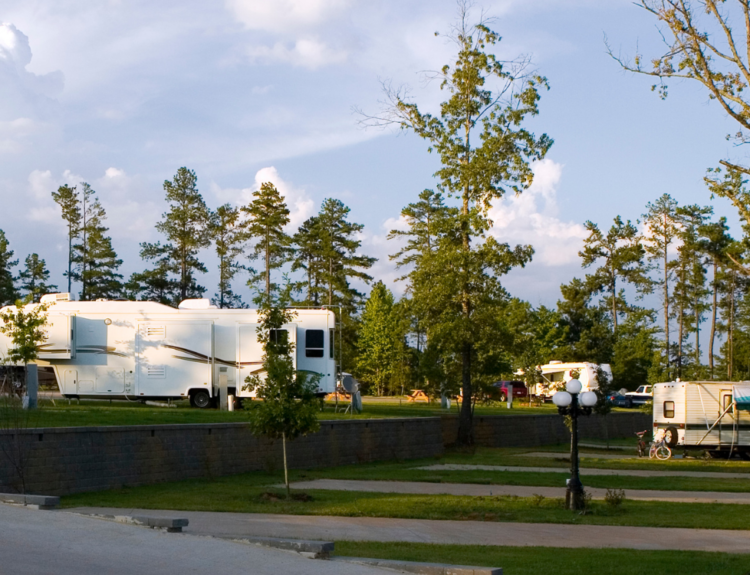With its open roads and picturesque landscapes, North America’s great outdoors captivate millions of RV travelers every year. Today, RV parks are not just destinations but also communities that offer respite to travelers, retirees, and even digital nomads.
In order to build an RV park that is successful and profitable you will have to do a lot of planning, research, and investment. You will need a clear vision, a realistic budget, and a solid business plan. You will also need to comply with various regulations, standards, and codes that apply to your location and industry.
Yet, in the digital era we are living in, the RV park business goes beyond all these. Modern RV parks need to adapt, evolve, and integrate digital advancements into their business model to stay relevant and appealing.
From understanding the nuances of land acquisition and infrastructure to establishing a standout online presence, this article will help you gain a clear understanding of how to build an RV park that meets your goals and expectations.
How to Design an RV Park
Creating a functional, yet inviting RV park requires more than just allocating spaces for RVs. It’s a delicate balance of practicality, aesthetics, and guest experience. Below, we will take a look at 5 steps in the process of designing and building an RV park.
1. Understanding Your Landscape
Familiarize yourself with the land. Consider the climate and weather conditions and make sure you provide shade, insulation, or heating for your guests. Natural features like trees, lakes, or hills can become central attractions or relaxation spots. Assess and improve the soil quality, drainage, slope, and vegetation of your land.
2. Layout Design
As you divide the land into sites, make sure each site has a parking pad and a camping pad with enough space for a picnic table, a grill, and a fire ring or pit. Use different types of parking spaces, such as back-ins, pull-thrus, or pull-ins. Optimize traffic circulation and accessibility. Provide clear signs and directions and avoid dead ends or sharp curves.
3. Prioritizing Guest Experience
Think about the path a guest would take from the moment they drive in. Position communal areas, such as lounges or fire pits, in central locations. Ensure there’s a logical flow from the entrance to RV spots, to amenities. Create a welcoming atmosphere with friendly service, clean facilities, attractive landscaping, security measures, and entertainment options.
4. Distribution of Amenities
Key facilities like restrooms, showers, and laundry should be evenly distributed across the park so that no guest has to trek too far. Similarly, recreational areas, whether playgrounds or swimming pools, should be situated away from vehicular traffic. Consider the noise level and privacy of your amenities when placing them in your park.
5. Installation of Utilities
Install utilities such as water, sewer or septic system, electricity, gas, and cable for your RV park. Hire professionals to run supply lines to each site and ensure they are safe and up to code. Installing a stormwater drainage system or a retention pond will help prevent flooding and erosion on your land. Maintain and inspect your utilities regularly.
Remember, the key to a successful RV park design lies in the details. It’s not just about fitting in as many RVs as possible but creating an environment where guests feel relaxed, catered to, and eager to return.
How Much Does it Cost to Build an RV Park?
From purchasing land to developing the necessary infrastructure and amenities, building an RV park is a multi-faceted process with various cost components. This breakdown should help you gauge the potential expenses.
Land Purchase
The price of land can vary widely based on location, size, and terrain. A plot closer to popular tourist spots or cities is likely to be more expensive than one in a more secluded area. As of recent figures, costs can range from $10,000 to over $50,000 per acre, but these figures fluctuate based on the region and market demand.
You should also check your area’s building or zoning codes to find out the requirements or regulations you need to follow.
Book a FREE, personalized demo
Infrastructure and Amenities
Developing the park’s core facilities can be one of the most substantial expenses. Roadways, electrical hookups, water, and sewage systems can collectively range from $15,000 to $50,000 per site. Also, consider the additional cost of amenities such as communal showers, laundry facilities, recreational areas, and Wi-Fi.
You can also offer some extra amenities such as a swimming pool, a playground, a clubhouse, a convenience store, a dog run, or a fitness center depending on your budget and target audience.
Marketing and Promotion
Establishing a new RV park also involves costs in digital advertising, website setup, and possibly even traditional advertising methods. In particular, and as the online forefront of your business, your website is crucial to building an RV park’s credibility. We will analyze in detail what makes a good RV park website in the next section.
All in all, to build an RV park, you will need to spend between $180,000 and $450,000 or even higher, depending on the size, location, and amenities. So while there’s definitely potential for significant ROI in the RV park business, you should also take into account that securing funds for your RV park’s initial investments can be challenging.
How to Create a Stand-Out RV Park Website
In today’s digital era, your RV park’s online presence is just as crucial as its physical one. A well-designed website can be the difference between full occupancy and vacant lots.
One of the key elements of a stand-out RV park website is a user-friendly design that prioritizes mobile optimization. Your site should load quickly, have clear CTAs, and have a simplified navigation structure. It should also showcase your unique features using high-quality images and virtual tours.
SEO best practices, such as integrating keywords and updating content regularly, will improve your site’s search engine ranking. Finally, you should implement a seamless and secure online booking system that offers clear pricing, availability, and payment options.
Remember, your website is often the first impression potential guests have of your RV park. Investing time and resources into making it exceptional can lead to higher bookings and repeat visitors.
RoverPass Premium Website Builder solution was designed to help RV parks create websites that boost their online presence, attract more customers, and grow their income. Our experts in writing, designing, and developing will make sure your website stands out from the crowd.
You can also integrate your website with our campground reservation software, so you can have a powerful and reliable sales tool around the clock.
Today, if you want to start a campground or RV park, you need to focus on the material and the digital aspects of the business. For more insights on both of these crucial dimensions of the RV park business, keep reading our blog!

